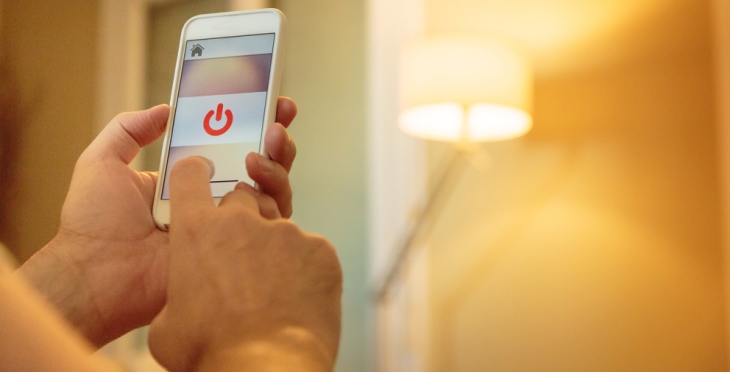Sometimes the little things make the biggest differences; no one knows that more than Veterans, especially those with disabilities. Adding smart devices to your home may seem like an unnecessary or massive task, but it’s actually one of those little changes that could make a meaningful impact on the quality of your everyday life.
The best place for most Veterans to start is to make inexpensive upgrades to the parts of the home they interact with on a daily basis. For most, that’s common items like light switches and thermostats. As anyone with limited mobility knows, the simplest task of turning down the heat can take a good amount of effort.
Switching to a smart thermostat is both simple and cost effective (which is probably why they’re among the first smart devices consumers add to their homes). In addition to the money you’ll save over time from easy scheduling and increased efficiency, it moves the chore of changing the temperature from reaching high on a wall to the convenience of a few taps on your smart phone.
Upgrading your light switches is simple as well, and most vendors produce inexpensive Z-Wave wall switches and even WiFi-enabled light bulbs. Don’t let the intimidating acronyms scare you away; simply put, bulbs and switches with these types of radios can talk to each other and your smart phone, all while blending in with the rest of your house. You’ll never walk across the room (or up the stairs) to turn off a light again.
Once you’ve experienced the convenience of using a few smart devices in your home, you’ll probably want a way to tie them all together instead of bouncing back and forth through a folder full of apps. This is where smart hubs come in.
Smart hubs are inexpensive devices that plug into your wireless router (the device that provides wireless internet throughout your home). There are many great options out there, and your internet service provider might even include a smart hub as part of a whole home security system—combining home security with home automation.
Think of these devices as a Rosetta stone that speaks the language of each individual smart device and can translate between them. Not only does this give you the ability to modify all of your settings in one app, but it opens the door to some advanced functionality that’s surprisingly easy to pull off. It can definitely make life easier to have all of these controls at your fingertips on your smart phone or tablet, but what happens if your device isn’t nearby? Or, what if you have trouble with tasks that require fine motor skills, like operating a smart phone? That’s where voice control comes in.
Once the dream of every Sci-Fi movie, voice control is now a technology that is taking the latter half of our decade by storm. Most of the major smart phone vendors have included interactive voice assistants for years, but the true breakthrough came with voice-activated smart devices that are convenient to place around the home. It’s great to change the temperature or adjust the lights with your phone, but doing the same with a single spoken phrase can be a game-changer. There’s something awe-inspiring about controlling your home with your voice, and if you’re bound to a chair or a bed, it could revolutionize how you interact with the world.
Many hardware companies and service providers now offer voice control technology. Prices are falling dramatically as the marketplace gets increasingly competitive. For less than $50, you can add a secure, always-listening virtual assistant that can play your favorite music, tell you the weather, call a family member, and yes, control your new smart home. You can also use voice control to operate your television remote, which can also be connected to your home security system.
All of this new technology may sound intimidating (and expensive!), but many of these changes are affordable and can have a tremendous impact on quality of life for Veterans. The next time you’re at the hardware store or chatting with your internet service provider, take a look at the smart home options and consider making a few upgrades as your next weekend project. It will make every day easier for you and your family, and you might just pick up a new (geeky) hobby.
Eric Murrell is a software developer and technology contributor to Xfinity Home. He writes the At Home in the Future Blog and enjoys sharing tips on how people can benefit from incorporating smart home and home automation features in their houses to make life easier.
Topics in this story
More Stories
Soldiers' Angels volunteers provide compassion and dedication to service members, Veterans, caregivers and survivors.
Veterans are nearly three times more likely to own a franchise compared to non-Veterans.
The Social Security Administration is hoping to make applying for Supplemental Security Income (SSI) a whole lot easier, announcing it will start offering online, streamlined applications for some applicants.







Great article and helpful. What can you say about remodeling parts of the home, prosetic devices and vehicle modifications?
Get with you’re local phone company. They can tell you the device you need and provide an authorization letter with disability proof. The nearest VA Audiologist can help in many ways, including what to get. They will most likely pay for the device after hearing review or a disability letter.
My husband is 100 percent hearing loss. Are there any phones for the hearing impaired that might help him?